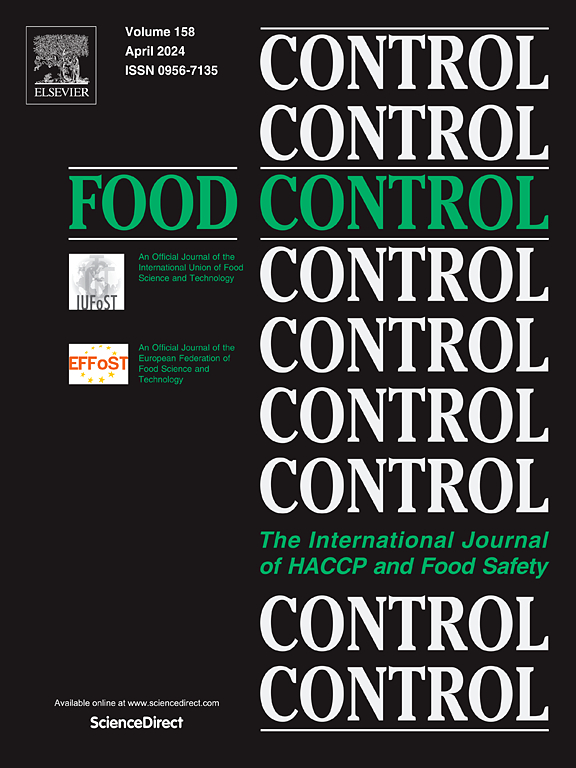Solidification of plant essential oils by electrostatic adsorption and Ca2+ crosslinking for pot-stewed duck neck preservation
IF 5.6
1区 农林科学
Q1 FOOD SCIENCE & TECHNOLOGY
引用次数: 0
Abstract
Pot-stewed duck neck (PSDN) is a popular leisure food in China. However, PSDN is rich in nutrients and has high water activity, which can easily cause the oxidation of fat and protein, and microbial growth, resulting in a short shelf life. As a potential preservative, plant essential oils have restricted application due to their poor water solubility, effumability, and easy oxidizability. In this study, the porous starch that had absorbed cinnamon and zanthoxylum essential oils (EOs) was encapsulated by electrostatic adsorption between chitosan and sodium alginate, and solid preservative (SP) was further formed by crosslinking of Ca2+ with sodium alginate. Results showed that SP exhibited good encapsulation property and sustained-release effect on EOs. Cinnamon EO showed antibacterial properties and the main component was cinnamaldehyde. Antioxidant property was observed in zanthoxylum EO and the main components were linalool and D-limonene. Subsequently, SP was used to preserve PSDN and stored in modified atmosphere packaging (MAP). Results showed that the SP-MAP treatment provided at least double-time extension of the PSDN shelf life for 3 and 11 days at 25 and 4 ○C, respectively. The lower values of volatile base nitrogen and thiobarbituric acid indicated that the lipid oxidation of PSDN was delayed. Besides, microbial growth of PSDN with SP-MAP was inhibited with the lowest total viable and fungal counts, and the results of incubation and enumeration of pathogenic bacteria in PSDN samples indicated that Escherichia coli, Bacillus subtilis and Staphylococcus aureus were effectively inhibited during the storage time. Therefore, solidifying essential oils combined with MAP was a promising method to preserve pot-stewed meat products.

求助全文
约1分钟内获得全文
求助全文
来源期刊

Food Control
工程技术-食品科技
CiteScore
12.20
自引率
6.70%
发文量
758
审稿时长
33 days
期刊介绍:
Food Control is an international journal that provides essential information for those involved in food safety and process control.
Food Control covers the below areas that relate to food process control or to food safety of human foods:
• Microbial food safety and antimicrobial systems
• Mycotoxins
• Hazard analysis, HACCP and food safety objectives
• Risk assessment, including microbial and chemical hazards
• Quality assurance
• Good manufacturing practices
• Food process systems design and control
• Food Packaging technology and materials in contact with foods
• Rapid methods of analysis and detection, including sensor technology
• Codes of practice, legislation and international harmonization
• Consumer issues
• Education, training and research needs.
The scope of Food Control is comprehensive and includes original research papers, authoritative reviews, short communications, comment articles that report on new developments in food control, and position papers.
 求助内容:
求助内容: 应助结果提醒方式:
应助结果提醒方式:


